Your ferment is moldy… now what? Here’s how to tell if you can still save it or if you should toss it, and 5 tips to prevent mold during fermentation in the future!
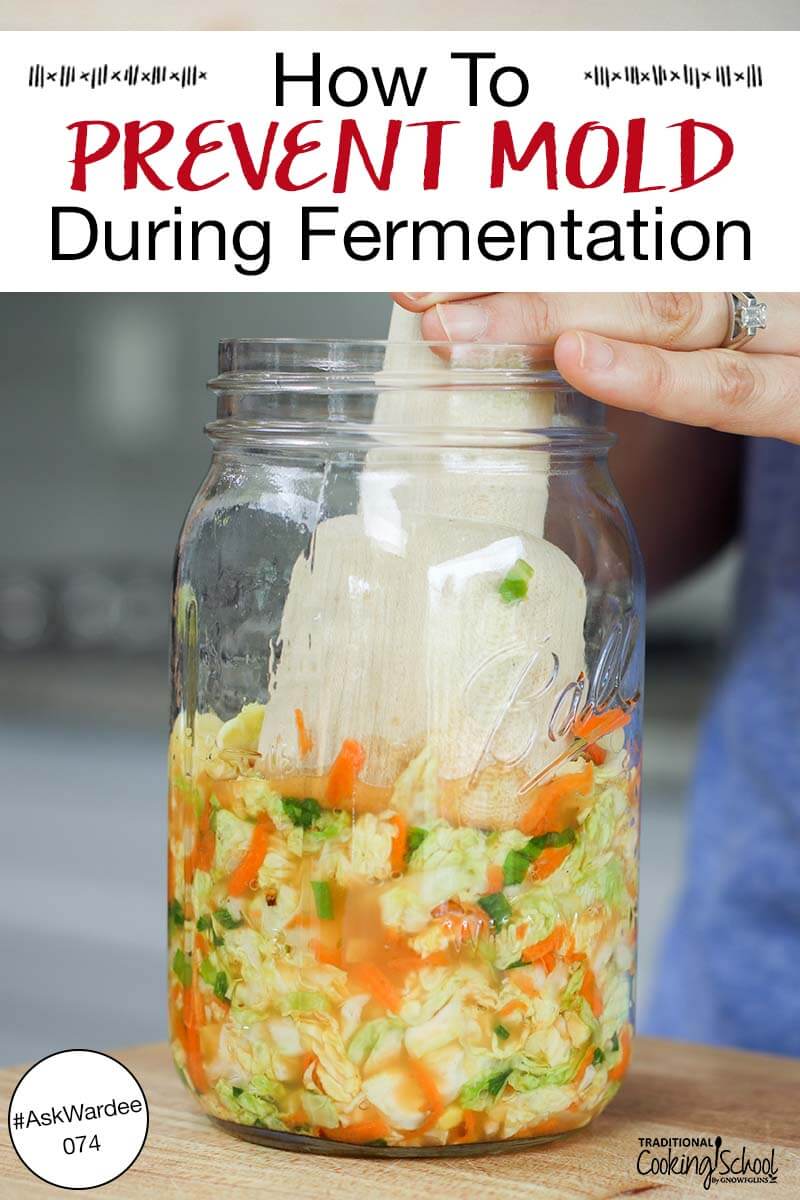
“I’m so bummed out! My first ferment in the crock was a total fail!” wrote Colleen S.
Colleen’s pickles turned soft and got moldy. 🙁
Oh, no… that bums me out, too!
How did this happen? How can she prevent it? Do these pickles need to be tossed… or not?
That’s the topic for today’s #AskWardee: troubleshooting mold (toss or not?), plus I’ll share 5 tips for how to prevent mold during fermentation so you can ensure better results in the future.
I broadcast #AskWardee live each Wednesday at 10am Pacific (1pm Eastern) on Periscope and Facebook Live. Both the podcast and video replay of this week’s show are below. Enjoy!
Subscribe to #AskWardee on iTunes, Stitcher, YouTube, or the Podcasts app.
Table Of Contents
The Question: Why Did My Pickles Get Soft & Moldy?
Colleen S. asks:
Hi Wardee. I loved your video about the fermented pickles. I was wondering if you had any insight as to what happened with my batch — my pickles went soft and moldy. It is the first time I used my crock. It is a 2-gallon one. Maybe it is too big?
I followed your directions, but doubled the amount of salt water since my crock was bigger. I’m so bummed out my first ferment in the crock was a total fail!
We keep our house a little warmer around 78, but I’m most concerned about the MOLD! Why would it be covered in mold? That can’t be good?!
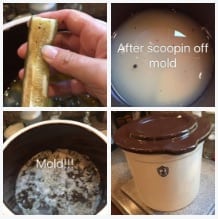
My Answer:
First, I’m thrilled you tried the pickles. And I want to encourage you to keep at it! Pickles are one of the harder ferments… but it’s so worth it to get them right!
So let’s talk about how to prevent mold during fermentation.
I have 5 tips for you! Some of this information comes from my friend Shannon’s new book, Traditionally Fermented Foods.
Good Bacteria Vs. Bad Bacteria
As Shannon says, “Before you panic at the sign of something in the white, fuzzy or funky department, remember this: Yeasts and molds are everywhere. Not all mold is bad.”
Fermentation, from fermenting vegetables like pickles to cultured dairy to sourdough, wouldn’t be possible without beneficial bacteria and yeasts. If conditions are right to allow these good microorganisms to thrive, they do all the work of keeping the bad microorganisms in check.
What causes mold on ferments?
Here are a few factors that can lead to moldy ferments. Troubleshooting one or more of them should help you get your fermentation game back on track!
- too warm (fermentation happens best at around 72 degrees Fahrenheit)
- not enough salt (salt inhibits growth of bad bacteria)
- too much air getting in and out of the fermenting vessel (most ferments need to be airtight)
- not completely submerged in brine (pack your ferment down or try a fermenting weight!)
I’ll cover each of these factors in more detail, below.
How to Prevent Mold During Fermentation
What is the best way to prevent ferments from going off in the first place? Here are 5 tips to prevent mold during fermentation.
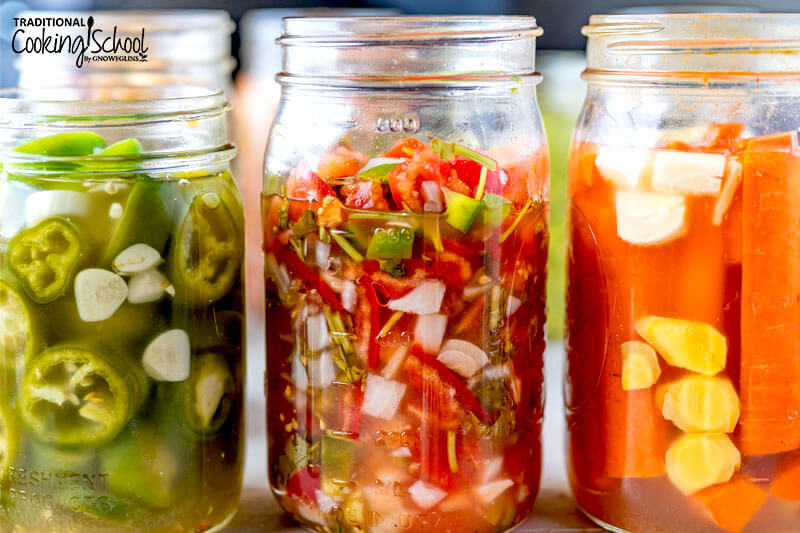
1. The Right Temperature
With fruit and vegetable fermentation, we say the ideal temperate is “room temperature”. That is 72 degrees Fahrenheit. Going lower down to 65 degrees Fahrenheit or so, is also fine.
However, much higher than 72 degrees (especially heading toward the 80s) is too warm. In warmer temps, foods will get soft instead of developing a nice crunch. Also at warm temps, fuzzy or colored molds are more likely to develop.
2. Start With Clean, Organic Foods and Pure Water
It’s really important to ferment clean, pesticide-free, herbicide-free, healthy fruits and vegetables. If the food is from your local farmer, maybe it’s not “organic” — yet do they spray? Are there pesticide residues? These poisons will mess up safe and effective fermentation. Get the best quality fruits and vegetables to ensure the best result and prevent mold during fermentation.
It’s also important to use uncontaminated, pure water. The beneficial bacteria and yeasts in ferments may have trouble thriving in water contaminated with chlorine, chloramine, or flouride (among thousands of other contaminants found in city water).
If your water is not clean or you don’t filter it, I recommend purchasing spring water or filtered water (here’s how to choose the best water filter for your family!). If your water is filtered and does not re-add minerals back, consider fortifying it with natural mineral drops.
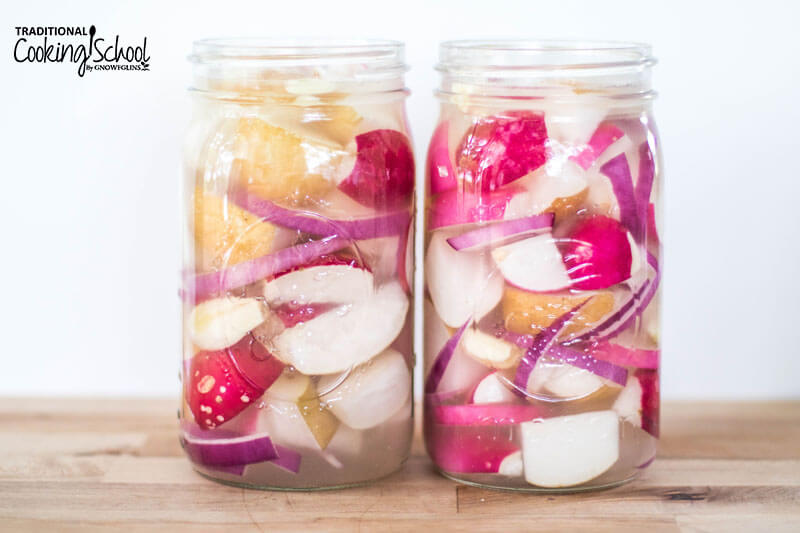
3. Clean Containers and Utensils
Mold and yeasts are everywhere; it’s impossible to get away from them. Yet, how clean are your containers? No need to be sterile, but we do need to use clean and sanitary conditions.
Washing in hot, soapy water, rinsing in hot water, and then air-drying on a clean towel is usually sufficient. Or, use a hot cycle on the dishwasher or even boil your jars and utensils.

4. The Right Salt and The Right Amount of It
Not only is it important to use unrefined sea salt (like Real Salt or Himalayan Salt), it’s important to use the right amount.
My basic brine is 6 tablespoons of salt per half gallon of water. That’s what I use unless the recipe specifies differently.
Ferments that don’t call for brine? Follow the recipe instructions or get my free cheat sheet to learn basic amounts according to type of ferment.
You also need to follow recipes you can trust. Mine qualify 😉 as do Shannon’s in her book Traditionally Fermented Foods.
5. Air-Tight Containers With a Proper Seal
If you still have issues with mold, you can invest in containers that are air-tight (or pretty air-tight). The less oxygen in the ferment, the better the result.
What are the best fermentation vessels? Ideas for you:
- These Pickle Pro airlock lids fit on your Mason jars, turning them into relatively air-tight containers. I use these all the time!
- Use a fermentation crock with a water seal — like this 3-gallon stoneware crock from Ohio Stoneware. This is great when you want to make a BIG batch of kraut or pickles or other ferment.
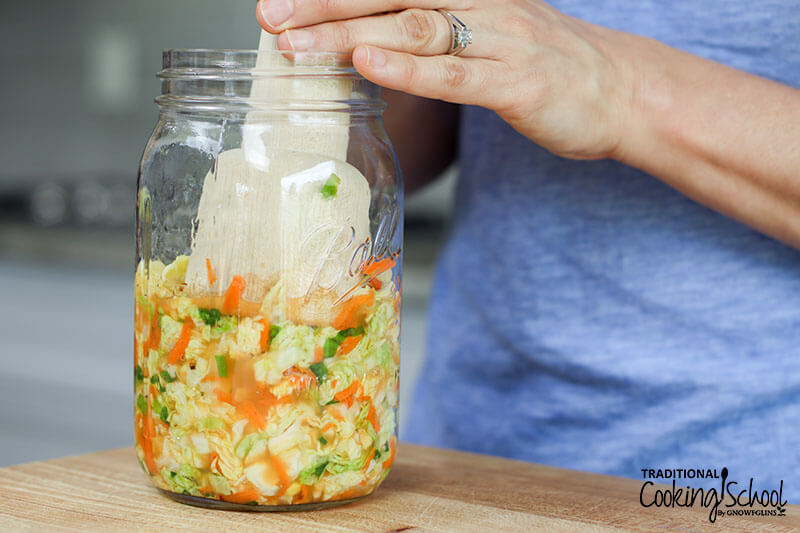
Bonus! 6. Submerge Ferments Completely
In addition to using air-tight containers, it also helps to pack your ferment down beneath the level of the brine. You can do this manually from time to time and/or use fermenting weights. If the ferment is submerged, it is less likely to go moldy.
Troubleshooting Moldy Ferments
Unfortunately, ferments still go moldy from time to time, despite our best efforts. Let’s go over what to do when it happens: is it safe to consume your ferment or should you toss it?
As Shannon, author of Traditionally Fermented Foods, says:
The key is not to panic and to know what to look for. […]
Please don’t freak out and throw out whatever fermented food you found with this stuff on top! Unless you see some of the signs to worry about… it is fine. It is normal for yeast to develop in moist, oxygen-rich environments. Scrape off your vegetable ferment, shake it into your kvass [pictured below] and remove it from your milk kefir or sourdough starter. Mother cultures can be recultured and vegetables can be eaten, so you should rest assured that if everything else looks fine, your ferment does not need to go into the wastebasket.
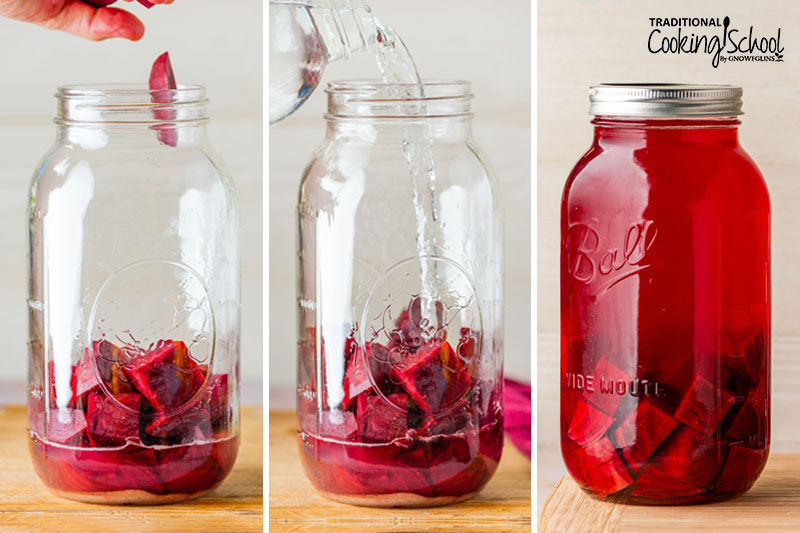
Here is a checklist you can run through if you ever have a question about a ferment:
1. Smell it. The best way to discern the health of any ferment is simply to smell it. It can smell sour, pungent, very fermented and even very yeasty. But it should not smell putrid, rotten or incredibly disgusting. If it does not pass this test, throw it out and start over. If it does, move on to the next item.
2. Check the color of the surface yeast. Is it white*? Then it’s probably fine, but you can do the smell test again. Is there any green, pink, yellow or blue? If so, I’d toss it. Even if it smells okay, this is a deal-breaker for me personally.
3. Taste it. If it smells strongly of tang or yeast, but does not smell rotten, and if it has no crazy colors to it, then it should be fine to taste it. […] It might be extra tangy or yeasty, or it might taste just as a fermented beverage or vegetable should taste. In either case, it is fine to consume. If the taste is too strong, then you may want to add it to the compost pile anyway. If it is a mother culture like milk kefir grains or sourdough starter, scrape off the mold and reculture it in fresh milk or with another feeding of flour and water.
*If the film is white and fairly flat, it is most likely kahm yeast which is a common occurrence and can be skimmed off or shaken in to the ferment.
I love Shannon’s down-to-earth advice. It rings true for me and is exactly how I handle ferments and troubleshooting. (This kind of advice peppers her book, by the way.)
Mold Vs. Other Issues
Mold isn’t the only issue traditional cooks face with their ferments!
If you’ve ever wondered what to do if your ferment is mushy, why your ferment isn’t bubbling, how to tell if your ferment is done, and many more questions… check out my in-depth guide to fermentation troubleshooting.
I answer all of your fermenting FAQs, compiled over years of helping TCS members with their lacto-ferments!
 Traditionally Fermented Foods — Now Available
Traditionally Fermented Foods — Now Available
Some of the tips and information you’ll find in this post come from my good friend (and food chemist) Shannon Stonger of Nourishing Days, from her brand-new, utterly beautiful book Traditionally Fermented Foods.
Shannon’s unpretentious and down-to-earth writing about the beautiful process of fermentation makes it do-able for beginners and oh-so-inspiring for advanced fermenters.
I love all her common sense tips! Only someone who has really had their hands in hundreds of ferments, as Shannon has, would know how to explain “when is it done?” (so you know what you’re looking for) and “what’s safe?” (so you can feel confident in what you make).
Traditionally Fermented Foods is available now at Amazon.com or other booksellers. Click here for more info or to buy now!
Go here to see a sample recipe from Shannon: Gluten-Free Sourdough Dinner Rolls.
Helpful Links:
- What Is Lacto-Fermentation? {Video}
- Old-Fashioned, Crunchy, Garlic-Dill Pickles
- Traditionally Fermented Foods by Shannon Stonger — new book!
- Gluten-Free Sourdough Dinner Rolls — sample recipe from Shannon Stonger
- No-Pound Sauerkraut
- FREE Fermenting Formulas Cheat Sheet
- Lactofermentation 101 Video Series
- Does Sourdough Bread Get Moldy? +Troubleshooting Dense Sourdough Bread #AskWardee 110
- How To Tell If Your Kombucha Is Moldy (And What To Do About It!) #AskWardee 103
- Pickle Pro airlock lids — fit on your mason jars, turning them into relatively air-tight containers
- 3-gallon stoneware crock from Ohio Stoneware — has a water seal to provide oxygen-free fermenting environment
- Real Salt or Himalayan Salt
What do you do if you encounter mold or yeast on your ferments? How do you prevent mold during fermenting?
This post was originally published and written by Wardee Harmon on 5/10/17. It was updated and republished on 5/13/22.
...without giving up the foods you love or spending all day in the kitchen!

2 free books:
Eat God's Way
Ditch the Standard American Diet, get healthier & happier, and save money on groceries...
We only recommend products and services we wholeheartedly endorse. This post may contain special links through which we earn a small commission if you make a purchase (though your price is the same).
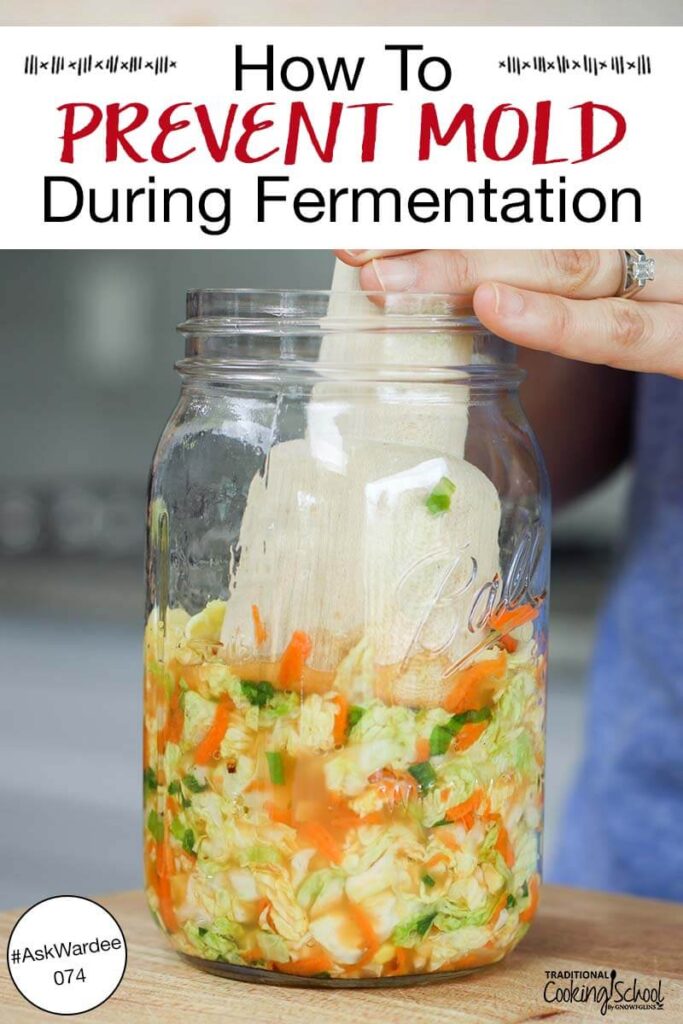
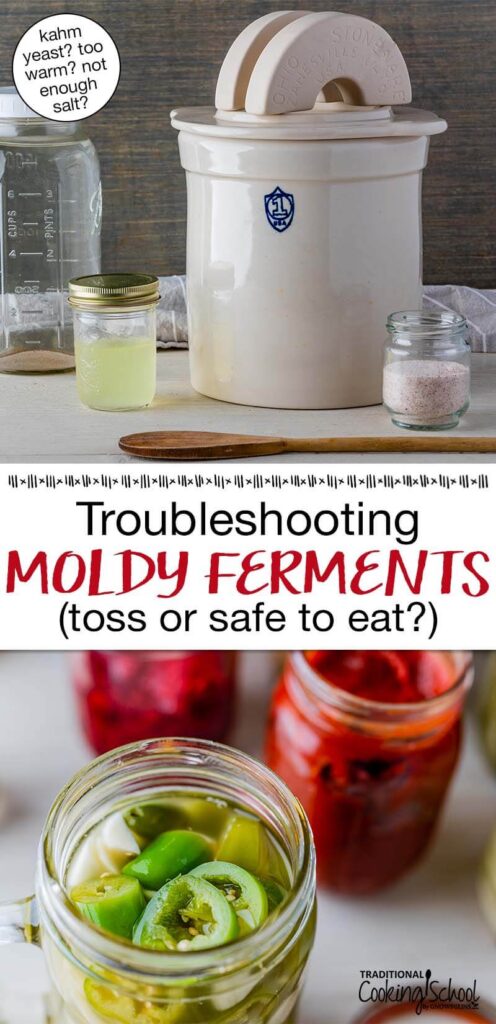
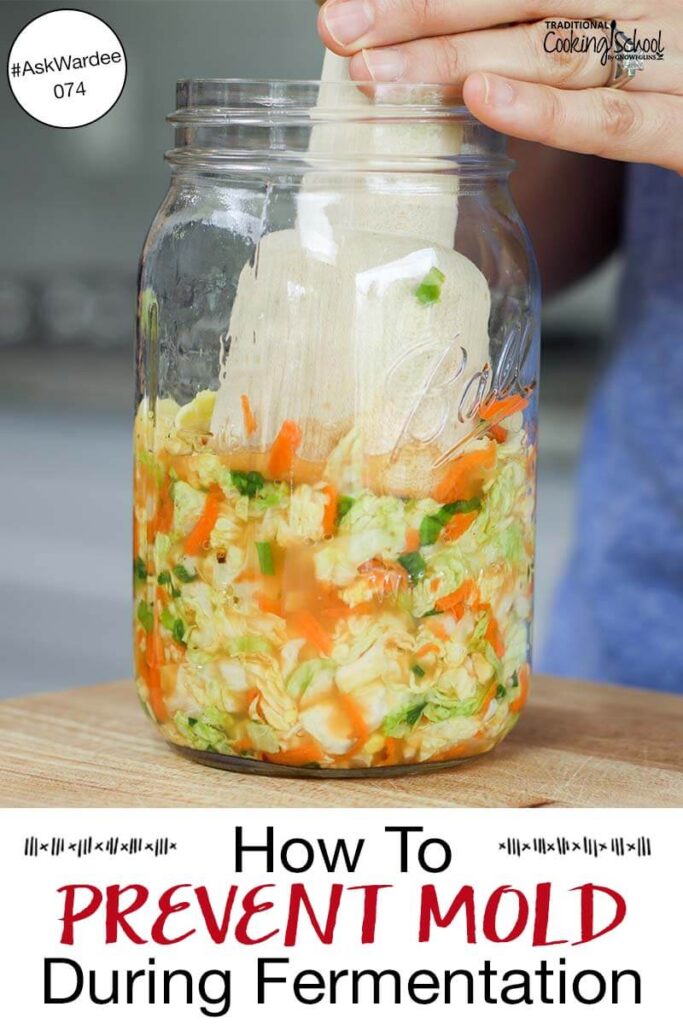
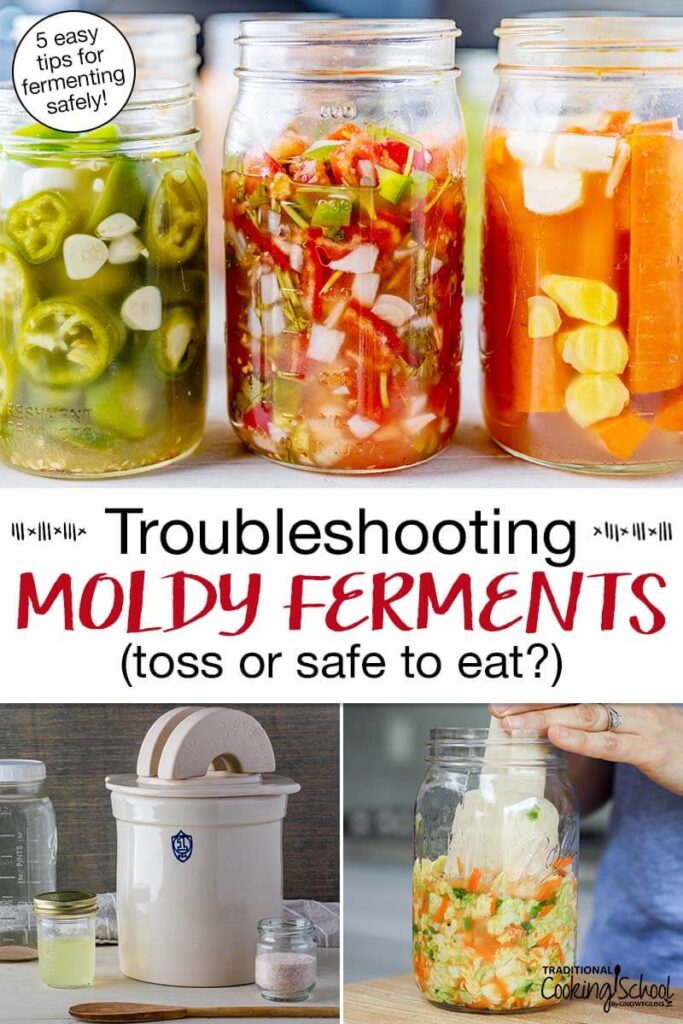
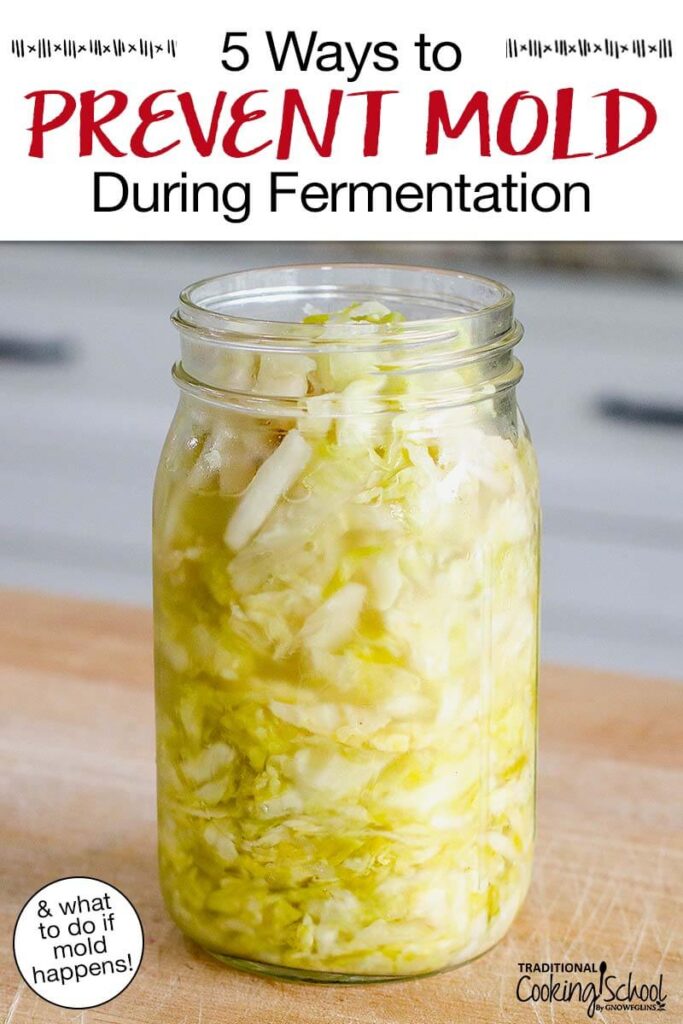
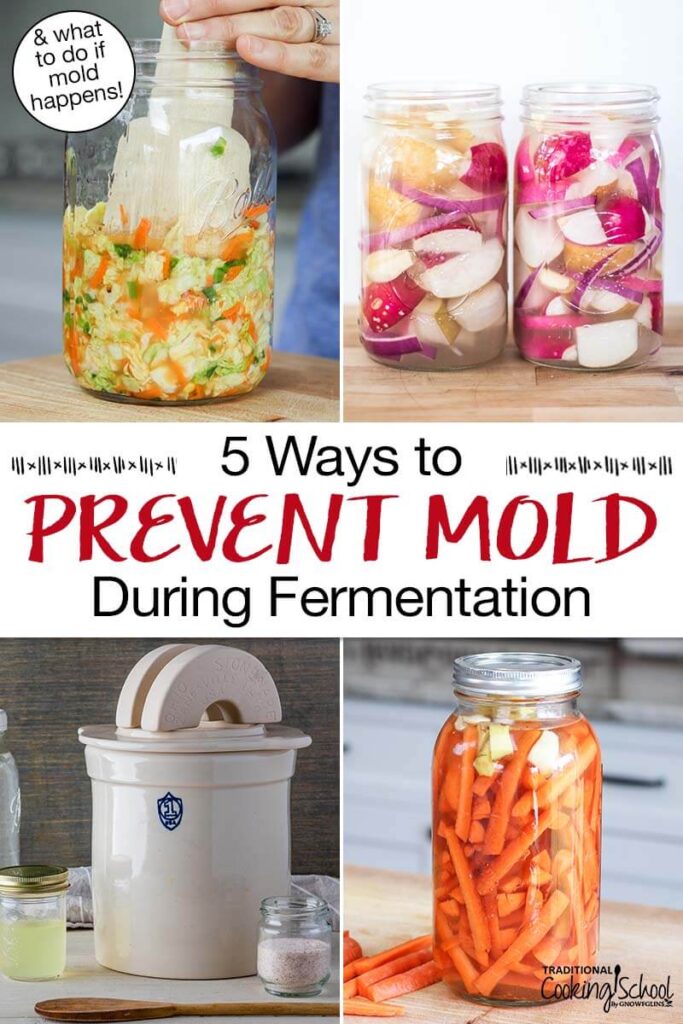
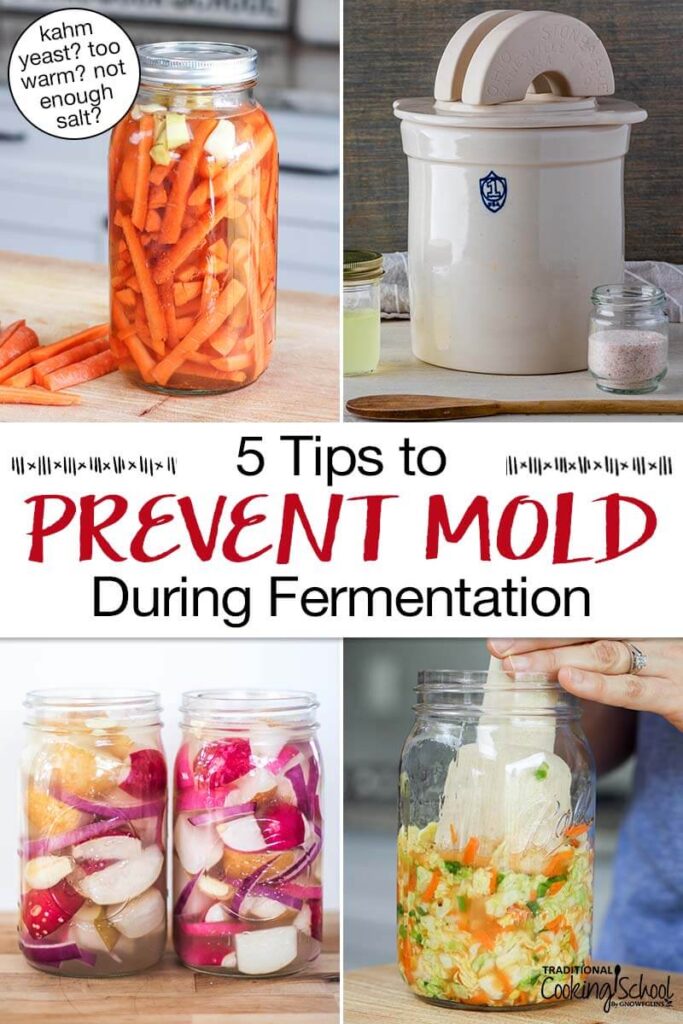
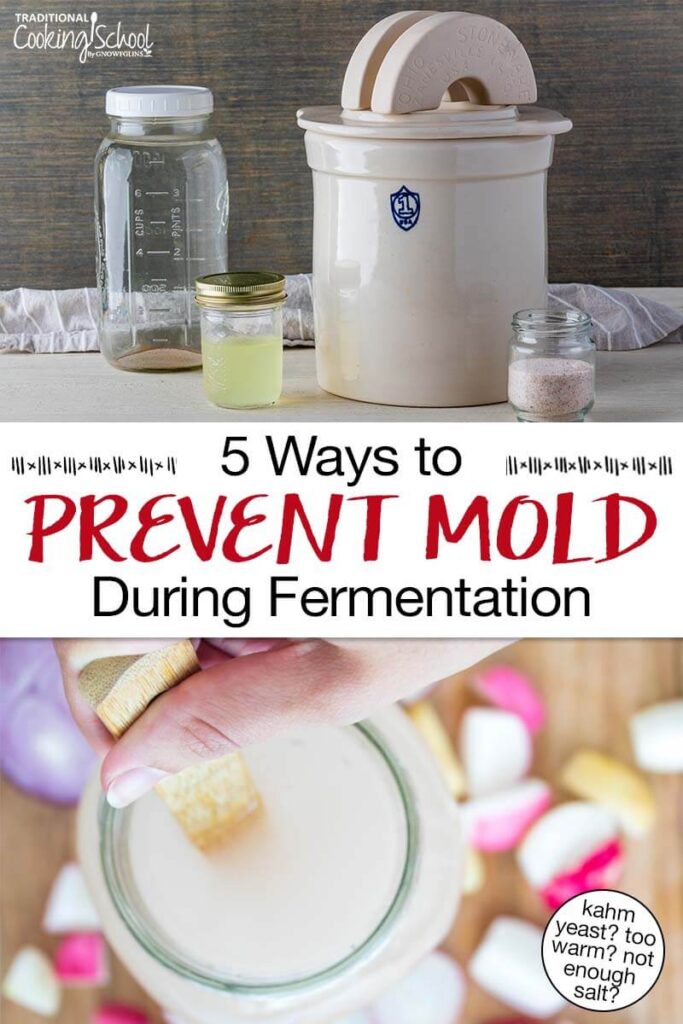
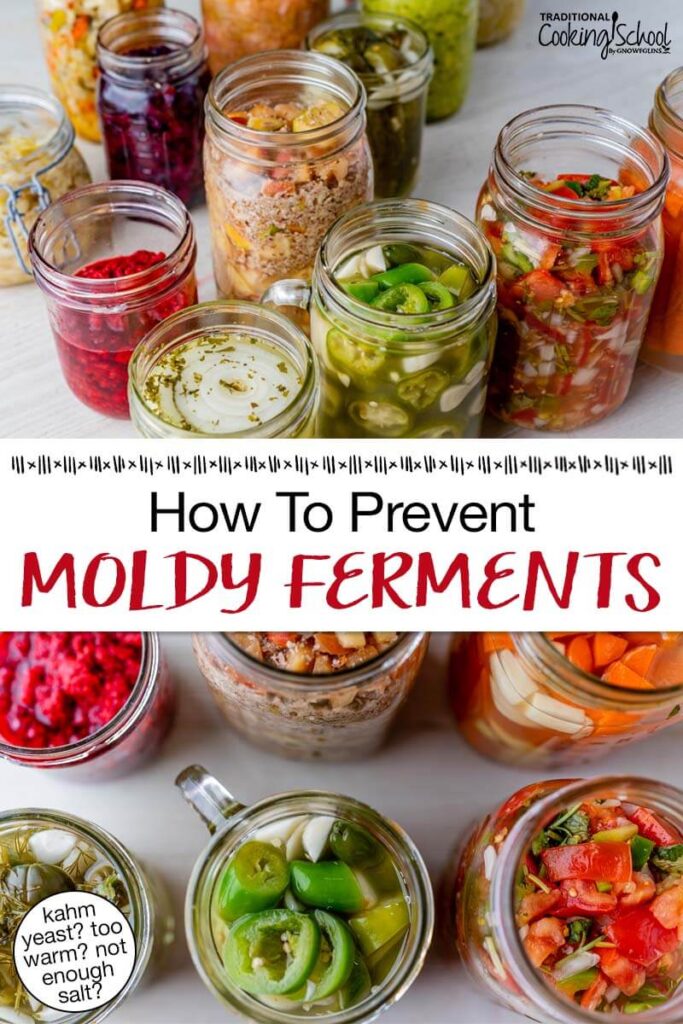
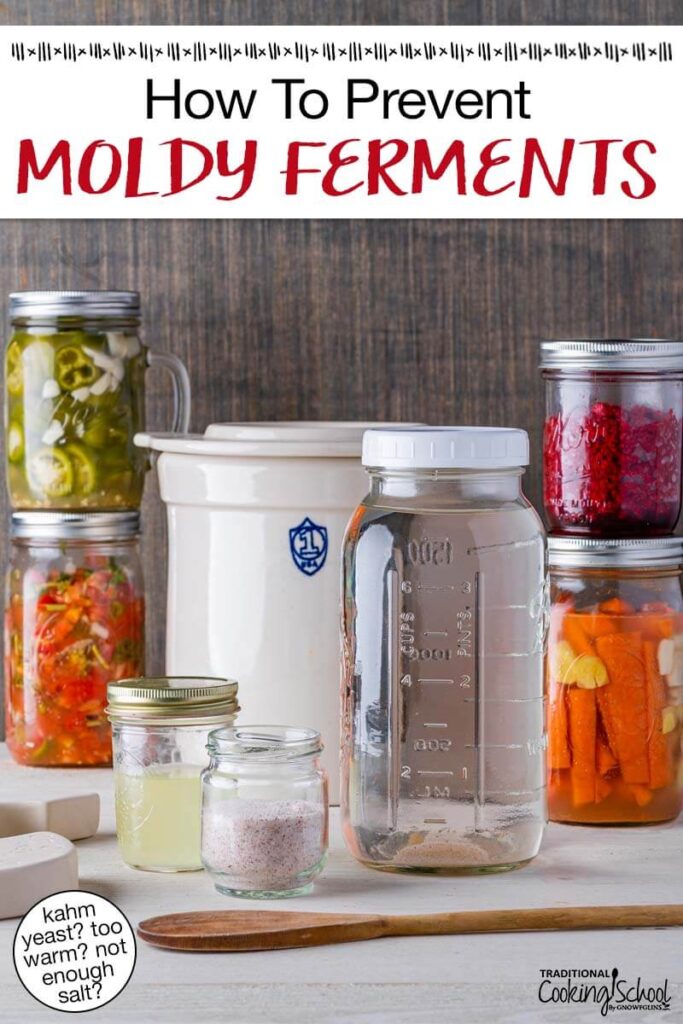
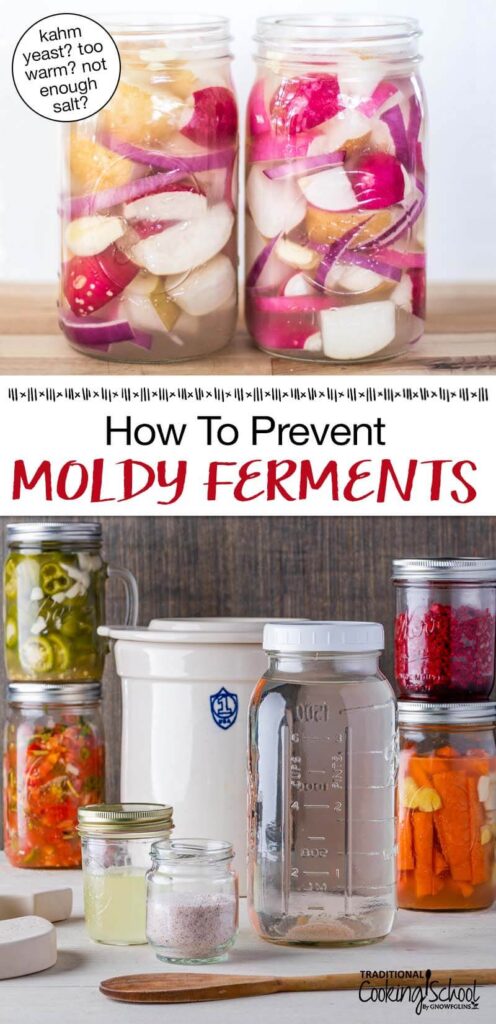
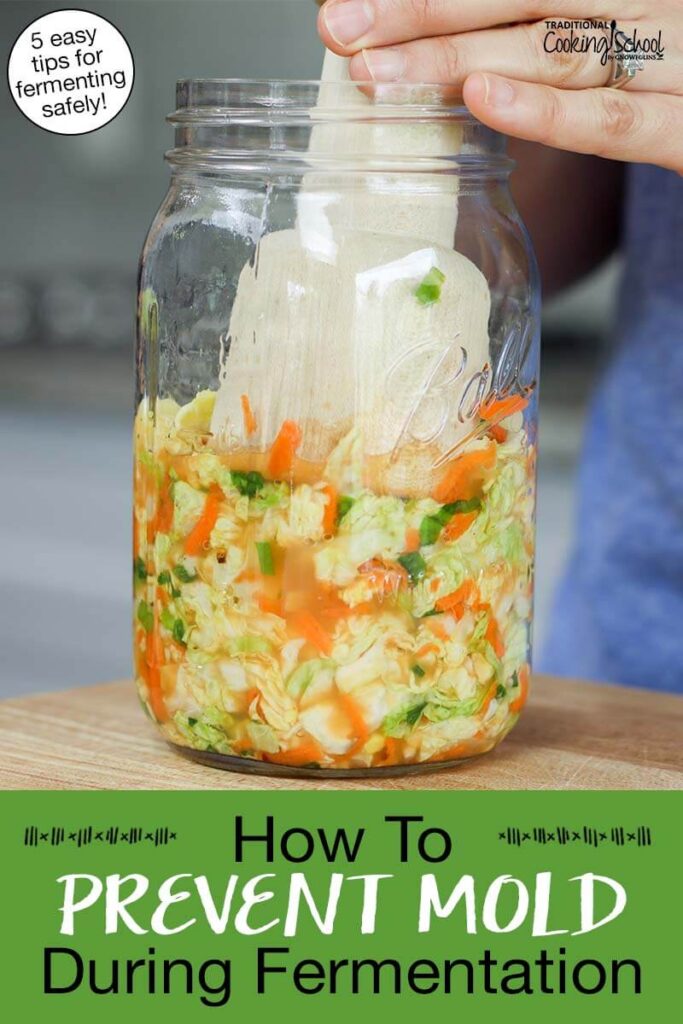
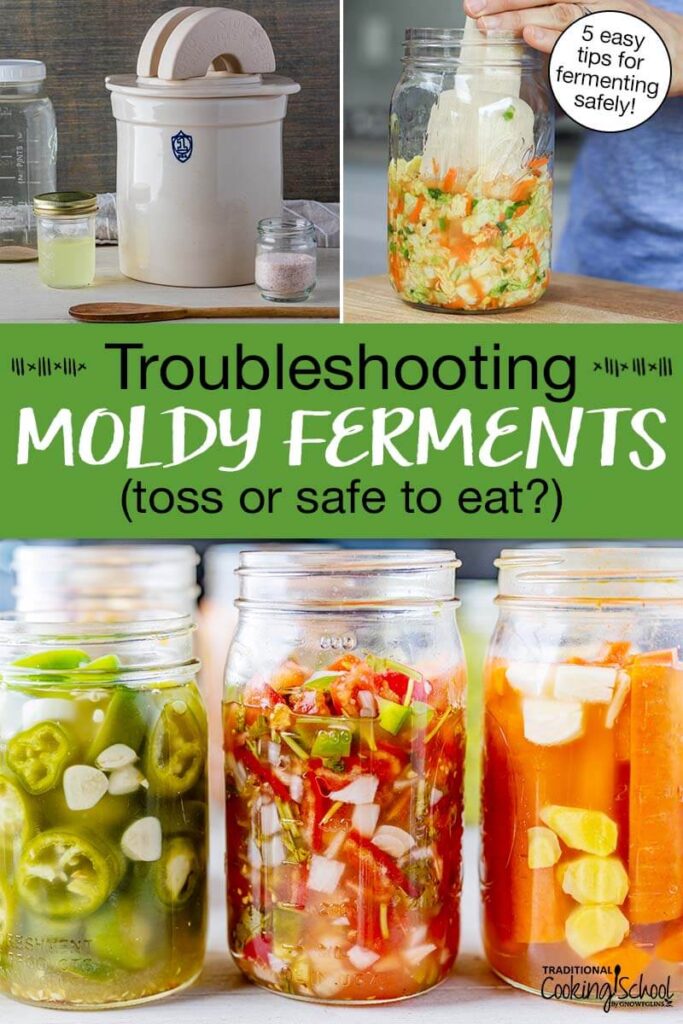
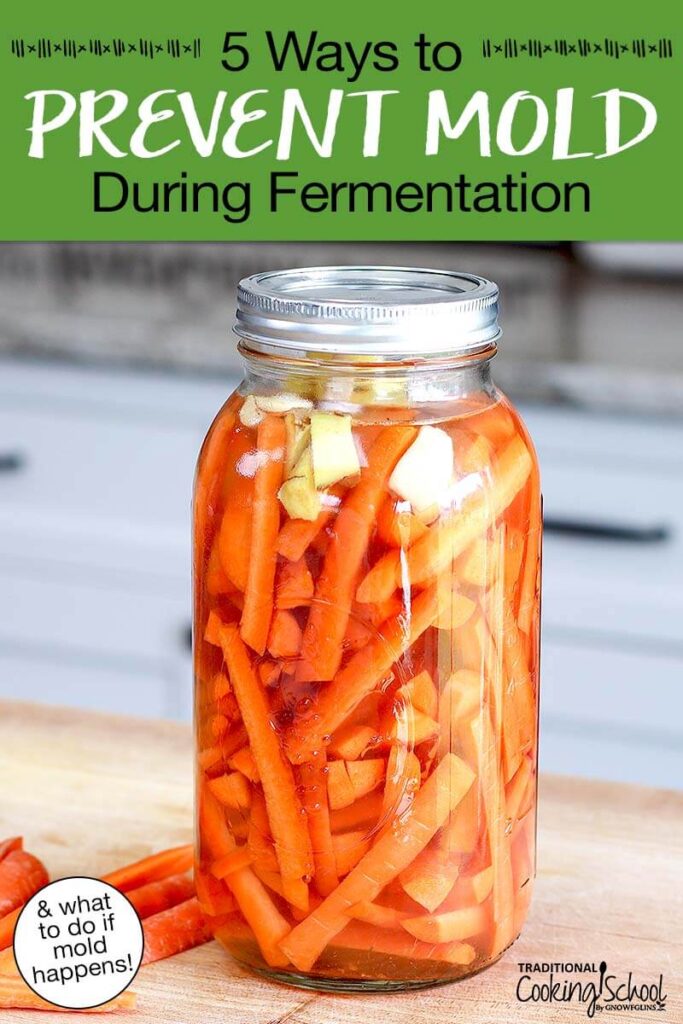
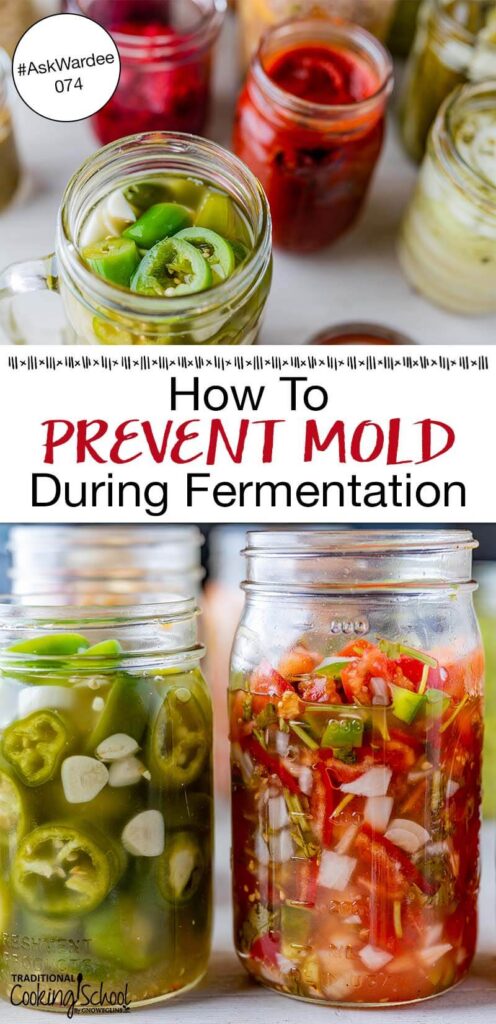


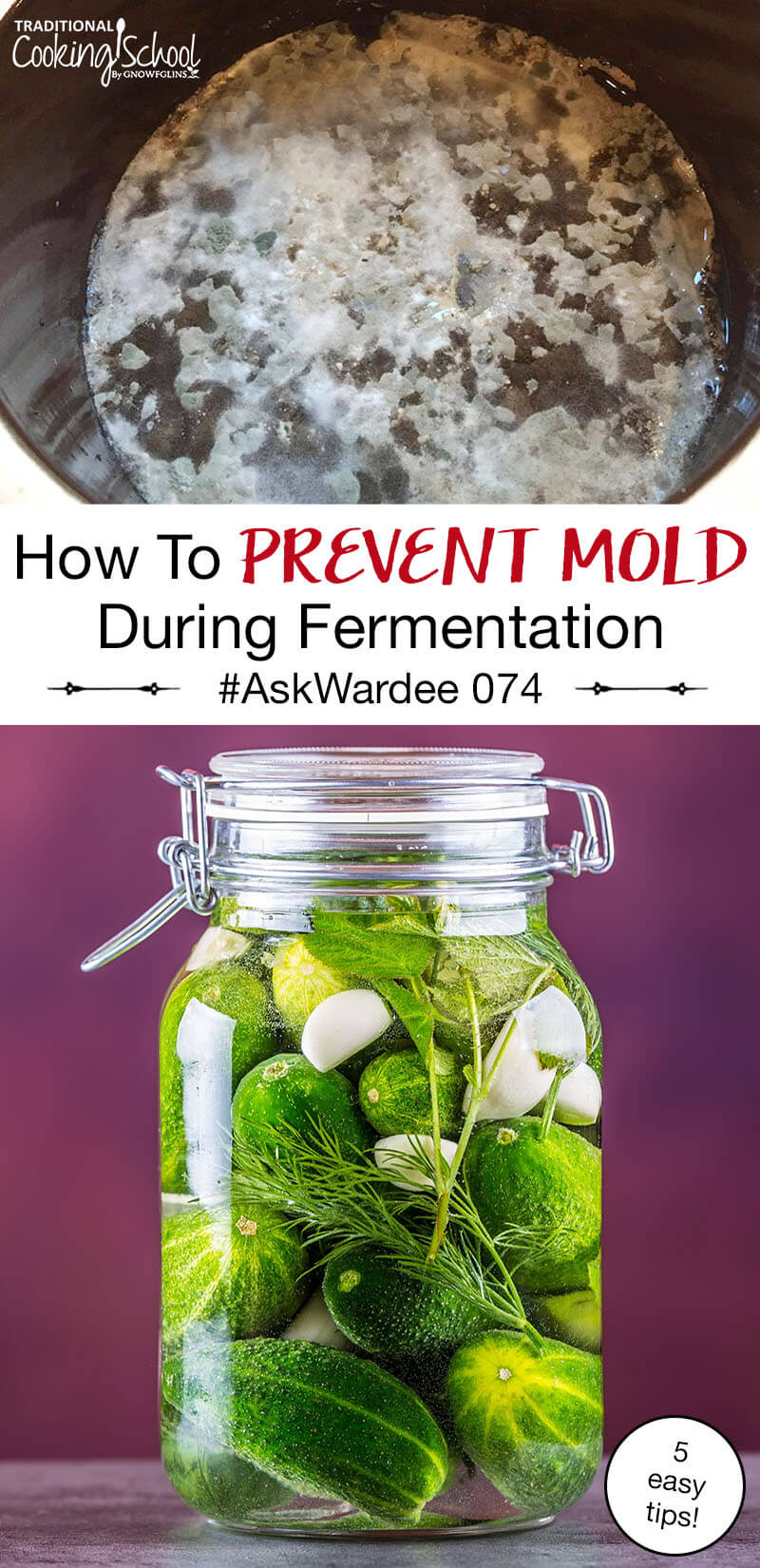
I tried to make kraut one time a couple years ago and it molded. So I bought a ferment thing similar to the pickle pro you show above. But I’ve been too scared to try again. So my ferment thing is still sitting in the package it was shipped in, lol.
Thank you, Wardee for all the tips on how to make fermented foods without molds, and how to tell if the mold is a dangerous one. I have also found good information on this website that gives recommended percentages of salt for various kinds of ferments. http://www.pickl-it.com/blog/636/brine-recommendations/ I too use the Pickle Pro fermentation lids and love them. I have found that weighing my salt is a better way than measuring as various salts weigh different amounts according to the moisture content just as flours weigh different amounts.
while not part of the mold discussion, soggy pickles may be the result of other issues.
low salt is one… but…
You neglected a key component of keeping ferments crunchy. Tannins. grape leaves, oak leaves, horse radish leaves. I made pickles using a couple wild grape leaves and they are still crunchy 6 months later, they went in the fridge as soon as they were ready.
the other thing about cucumber pickles is to cut the blossom end off, and be sure they are fresh, not overripe.
Lisa, you’re absolutely correct about the tannins and the blossom end, and I address both of those in the actual pickles recipe:
https://traditionalcookingschool.com/2017/03/20/old-fashioned-crunchy-fermented-garlic-dill-pickles/
Thanks for pointing it out!
Thanks for the info on moldy pickled I will try them when they come in garden.
I enjoyed the video and tips… I ordered the book 🙂
Thanks for being there to help us thru our adventures into healthy eating.
Thank you, Emmajean!
Hello, I live on the east coast of Florida where the humidity is very high and temperatures are now in the 90’s. Our thermostat is set at 78 degrees. Do you have any suggestions on keeping the food cool enough for fermenting?
Hi Carolyn,
You could try a cooler with a cold water bottle. It should lower the temp enough that it ferments slower but not so low that it mimics winter temps and doesn’t ferment. You may have to play around a little with using cold water or possibly ice water.
~Millie, TCS Customer Success Team
I purchased a crock but it’s probably too large for the two of us. If I only fill it half way, do I defeat the purpose of a water seal and risk molding?
Hi Connie,
As long as you can get a good seal you should be okay. Do a test batch and see how it turns out. 🙂
~Danielle, TCS Customer Success Team
I read that, according to seasonal eating, ferments should only be done in the colder months, as they are warming to the body. My house is usually at 78 in the hot summer because that’s the coolest temp we can afford, so I won’t be doing ferments at that time. Have you heard of this?
Hi Amy,
It’s definitely harder to ferment when the house is 78 degrees (that’s a bit warm).
But if you don’t, you miss out on certain fruits/veggies that aren’t in season at other times. 🙂
~Danielle, TCS Customer Success Team
It may be possible to find a cooler corner, perhaps your slab connected to the ground, or a basement corner that’s underground? I’ve heard of people burying things, but depending on where you live that may be hard or not useful.
I have not heard of the warming concept, but I might look into this. The other thing you can do is compensate by using a bit more salt or do shorter ferments that don’t take as long (such as fruit ferments) so there’s less risk of mold even growing.
the other idea is to safe the foods if possible for a fall ferment. usually the veggies like cabbage are more available in the fall anyway.
Oh no, I was so excited about trying to make fermented pickles, but by the time the cucumbers are in season it will surely be too hot to ferment in my house. That really doesn’t make sense to me. How did people first make pickled cucumbers since cucumbers grow in the summer?
Thank you,
Debbie
Hi, Debbie: You can still ferment during the summer when it is hot. While the ideal temperature is around 70 degrees, the process still happens when the temperature is warmer — but it happens much faster, so you really have to keep an eye on it. I live in Arizona, and we keep our thermostat between 80 and 85 degrees in the summer. I have no problem with my ferments. 🙂 —Sonya, Customer Success Team
I lean on my technology. I use a starter culture. Before I put the lid on, I squirt a capsule of Olive Leaf Extract. I always use a leaf to hold back ferments. On top of that leaf, I place a glass weight held down by a stainless steel spring. My lids have a silicone one way vent. I used to love the freezer bags you could vaccum out with a hand pump, which I still have. I use that to suck the air out of the ferment. Sauerkraut has lots of voids air gets trapped in even if you pound it down. Never had a problem with mold even in summer. Half gallon of kraut done in 3 weeks. PS: Purple cabbe is a natural litmus strip. In a low pH (acid) environment, it turns red. My purple kraut turns red and I know it’s definitely safe to eat. The remaining time spent fermenting is for my palette.
I used Wardee’s fermenting book for 2 recipes: Okra and Saukraut. However I don’t seem to use all the water recommended, so I think I am missing the salt that is recommended. I am afraid of spoiling because of this. Should I just add the salt upfront and add the water afterwards?
Hi, Marie,
In the post above Wardee recommends her basic brine:
My basic brine is 6 tablespoons of salt per half gallon of water. That’s what I use unless the recipe specifies differently.
If your saurkraut isn’t producing enough brine on it’s own I would mix up some basic brine and add to the top of the kraut.
~Peggy, TCS Customer Success Team